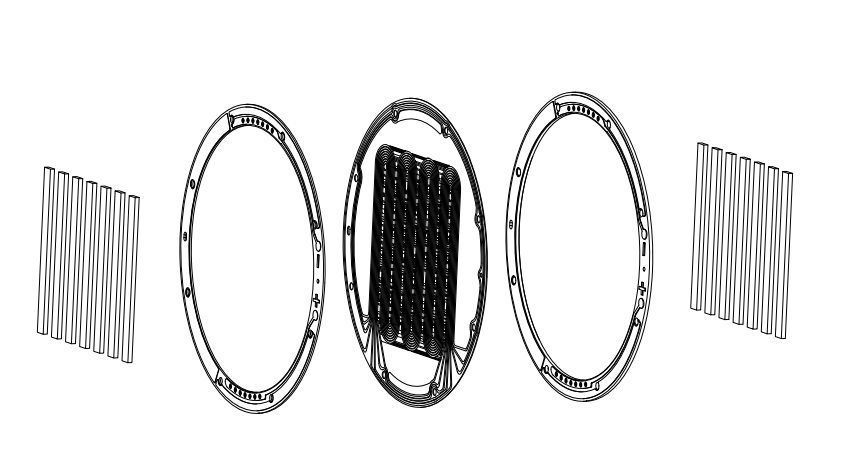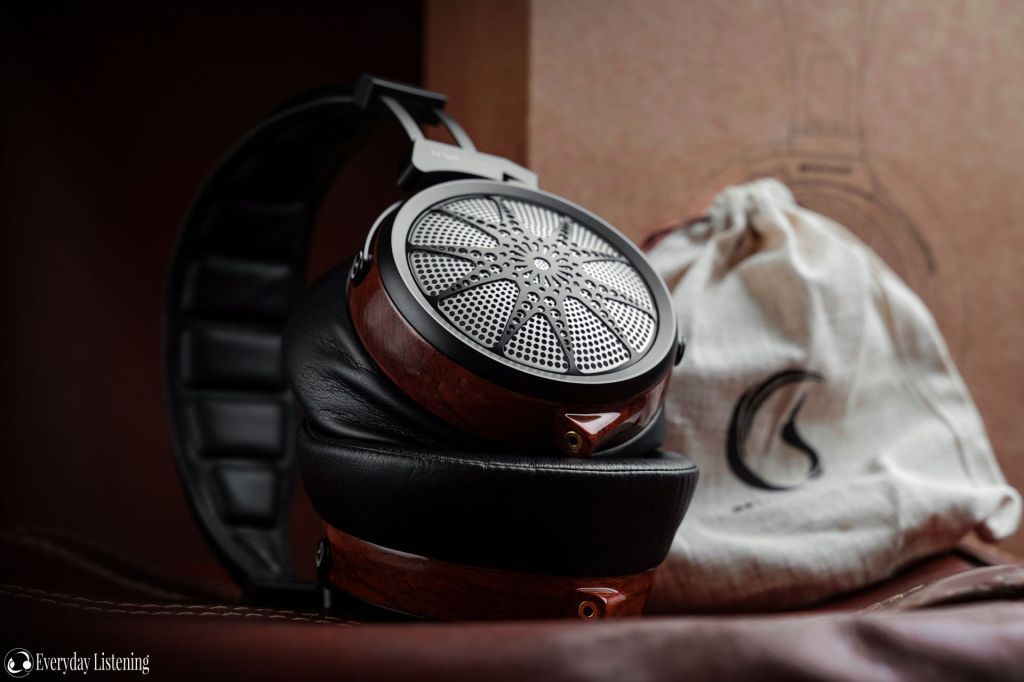Pros –
Excellent all-day comfort, Rich and textured low-end, Linear and well-detailed treble, Sharp imaging, Very easy to drive, Great carrying case and cable
Cons –
Recessed and stuffy midrange heavily limits versatility, Small stage dimensions, Average treble extension
Verdict –
This is a headphone with superb all-day comfort and an attractive design suitable for lovers of a rich, V-shaped sound with zero midrange intensity.
Introduction –
Sendy Audio is a sub-brand of Sivga, yet ironically may be better known in the international market. This is for their highly successful Aiva planar magnetic headphone, which quickly won over the hearts of critics and consumers alike, cementing a solid reputation for the relatively new company. The brand has since released a good selection of headphones with varying tunings and targets. The Phoenix was a warm yet relatively well-balanced dynamic driver model at a low price point and the recently released Peacock was their all-out attempt at making a flagship planar magnetic headphone. The new Apollo lies somewhere in-between. It assumes the quad-former driver tech pioneered by the flagship and brings the price point down to mid-fi levels making it far more accessible for most buyers. It targets a rich, engaging sound and high efficiency, representing the next chapter in Sendy’s headphone designs.
The Apollo is available for $499 USD. You can read all about it on Sendy Audio’s website here!
Disclaimer –
I would like to thank Collin from Sivga/Sendy Audio very much for his quick communication and for reaching out to organise a review of the Apollo. All words are my own and there is no monetary incentive for a positive review. Despite receiving the headphones free of cost, I will attempt to be as objective as possible in my evaluation.
Contents –
- Page 1: Intro, Unboxing, Design
- Page 2: Sound Breakdown
- Page 3: Comparisons & Verdict
Specifications –
- Driver: 68mm planar magnetic driver
- Impedance: 16 ohms
- Sensitivity: 95 dB
- Frequency Response: 20 Hz – 40 kHz
- Weight: 395g
Behind the Design –
QUAD-FORMER Driver

First seen on the flagship Peacock, the Apollo also uses a derivative of the company’s quad-former technology. This encompasses a modified planar magnetic driver. This starts with a double-sided magnet design but is further expanded upon with double-sided dual voice coils, meaning there are 4 on each driver. The company reasons this provides improved efficiency in addition to more uniform force distribution over the diaphragm surface resulting in lower distortion.
Premium Housings
The Apollo is made from rosewood that has been carved using CNC, sanded, polished, painted and dyed for an immaculate finish. Furthermore, it sports tough steel grills forming a low resonance, high-damping acoustic environment for the 68mm planar driver. The company spent 3 years developing this design and driver to work in tandem to provide their desired sound.
Unboxing –

Overall, the unboxing experience is highly similar to Phoenix which sets the tone for much of my following impressions. The Apollo comes in a hard box with simple print on the front and back. Opening the lid reveals a nice moulded carrying case within a foam inlet as seen on the Phoenix. Inside are the headphones alongside a hessian pouch containing the cable and a 4.4mm to 3.5mm adaptor – a nice touch. It’s a considerate unboxing that has everything required to get the user started. I am especially a fan of the carrying case for its modest dimensions and snug fit with the headphone. In addition, as the sliders simply move the strap within the metal spring, the headphones fit into the case no matter what position they are set to.
Design –
Glancing the Apollo and you’ll see a clear family resemblance to the Phoenix and flagship Peacock. All employ a very similar base chassis with round grills, articulating hangers and a low-profile suspension headband. The Apollo has a unique flared design that, alongside CNC milled cherrywood earcups, gives it heaps of personality. I am personally a fan of matte/raw wood finishes, though arguably the lacquering here does provide better contrast to its matte features otherwise. It also provides some contrast to the Phoenix which has an inverted texture palette. As a result, the faceplates tend to draw focus with their gradient-inducing curve framed by moody satin black. It’s an attractive headphone with reasonable dimensions that will appeal to those that find most full-size open-back headphones intimidating.

Below are dual 3.5mm mono connectors similar to what you’d see on Hifiman and Meze’s 99 headphones. They exit at an angle to prevent the cable from contacting the wearer’s shoulders during listening. The stock cable impresses with its quality representing a huge step up from the Phoenix’s. It’s a 4-wire braided unit with 6N OCC conductors and a two-tone smoke/clear jacket that complements the housings beautifully. The jacket is soft with minimal memory or microphonic noise transmission making it a pleasure to live with day-to-day. This is aided by knurled metal connectors that are easy to handle and decent strain relief at each termination. I appreciate that the company decided to terminate the cable in balanced 4.4mm as you can always use a single-ended adaptor to convert a balanced cable but not vice versa.
Fit & Comfort –
Given the abundant similarities between Sendy/Sivga’s line-up, I feel these products should contextualise my experience here. To elucidate, I did not have a fantastic ergonomic experience on the Phoenix as I found its small, shallow pads to form hotspots over time. The same cannot be said for the Apollo which thankfully, represents a total transformation in terms of wearing comfort despite the visual similarities. The headband offers a similar experience to before being low-profile yet comfortably conforming to the head. Though the padding is light, the soft goatskin strap combined with the relatively light 395g total weight of the headphones means hotspots on the top of the head shouldn’t be an issue. Compared to the Phoenix, you have a slightly larger range of adjustment too, though I did find myself maxing out the slider so these may not be the best choice for those with a large or tall head. As always, let your experience with other headphones dictate your judgement here.

The earpads are the main improvement, that said, benefitting from substantial enlargement in all dimensions. Their tapered design means the company was able to give them a huge surface area and internal dimension without overly enlarging the headphone shells themselves. With super soft memory foam stuffing, the pads conform beautifully to individual head shape and spread the clamp force wonderfully. Their large aperture and depth meant my ears didn’t contact the drivers at all, providing perfect long term comfort. Perhaps the only area of complaint here is that they have a faux leather complexion which may not wear as well as authentic leather. They also aren’t especially breathable but are easily replaced as they are secured only by a twist lock. Isolation is minimal as expected for an open-back design meaning these are best reserved for home listening.



